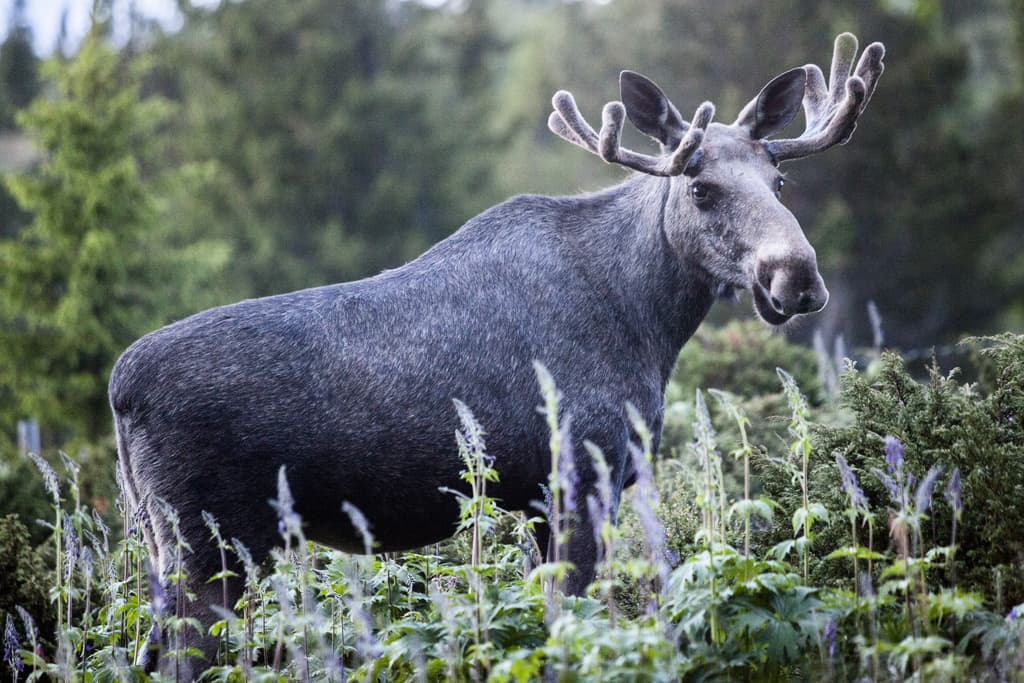The culling of the elk population has reached a new low record. Concern for the species is growing, both among hunters and nature conservationists. The population is now believed to consist of around 200,000 animals, likely the lowest since the 1970s.
Many experts believe that the elk will be red-listed this autumn.
It has decreased so rapidly that it will likely end up on the list, says Daniel Ligné, national hunting consultant at the Hunters' Association.
The authority that decides on red-listing is the Species Data Bank at the Swedish University of Agricultural Sciences, SLU. There, they have noted that the elk population has declined sharply over the past ten years.
We will look into this in the autumn, says Henrik Thurfjell, responsible for vertebrates at the Species Data Bank.
Red-listing
If it can be established that the elk population has decreased by at least 15 percent over three generations, the species will be placed in the "near threatened" category on the red list. Three elk generations correspond to 21 years.
If the species has decreased by 30 percent, it will instead be placed one step higher on the threat list, in the "vulnerable" category.
This situation was not expected. When the elk population was at its highest in the early 1980s, there were likely over 500,000 elk in the country. The top year 1982-83 saw 174,741 elk shot in Sweden.
The latest hunting year, 2023-24, saw a culling of 49,958 elk, which corresponds to only 28.5 percent of the culling in the 1980s. The last time it was this low was in the mid-1970s.
Tough Hunting
The reason for the decline is the tough hunting of recent years, which in turn is an effect of the system with elk management groups introduced in 2012. In these groups, where decisions are made about the scope of elk hunting in each area, three representatives from the hunting community and three representatives from the landowners sit. The latter have the casting vote.
Daniel Ligné believes that this has forced a higher culling. He also says that the large forestry companies, which would like to have as few elk as possible in the forest to minimize browsing damage, are overrepresented in the groups.
I think it's sad, and I think most people think so. Ordinary people don't see any elk anymore. And for tourists, it's also sad. We want a different management, he says.
At the same time, SLU has suspected that the elk population may have started to turn slightly upwards again, and now there may be a few more than last year.
Hunters have started to hold back, says Fredrik Widemo, wildlife analyst at SLU.
Daniel Ligné agrees with this:
Now we've reached the bottom. This autumn, many will probably be having coffee and eating buns when it's time to hunt, he says.
The so-called red list is a list that includes all species that can be considered threatened to their existence. The Swedish list is managed by the Species Data Bank at the Swedish University of Agricultural Sciences and includes, among other things, 22 mammal species, of which 10 are classified as threatened.
These include, for example, the wolf and the wolverine. The species are placed in different categories based on the degree of threat: acutely threatened, strongly threatened, vulnerable, and near threatened.
Source: Species Data Bank
The elk (Alces alces) is the world's largest deer species. Bulls weigh 380-700 kilos (a record bull in Yukon, Canada, weighed 820 kilos), cows generally 200-490 kilos. The largest elk are found in eastern Siberia and northwestern North America.
The Nordic elk are smaller. The distribution includes Canada, northern USA, the Nordic countries, the Baltic States, Poland, Belarus, Russia, northern Kazakhstan, northern Mongolia, and northeastern China. The global population is estimated to be 2.5 million animals.
Source: IUCN





